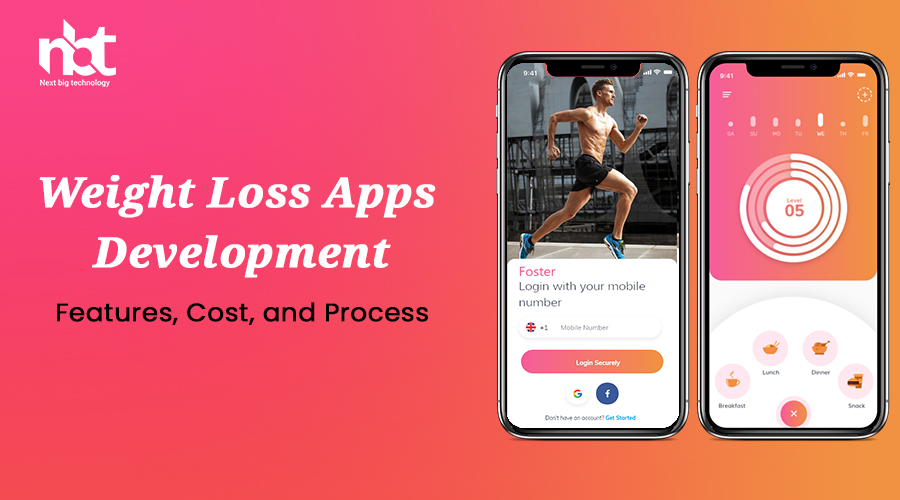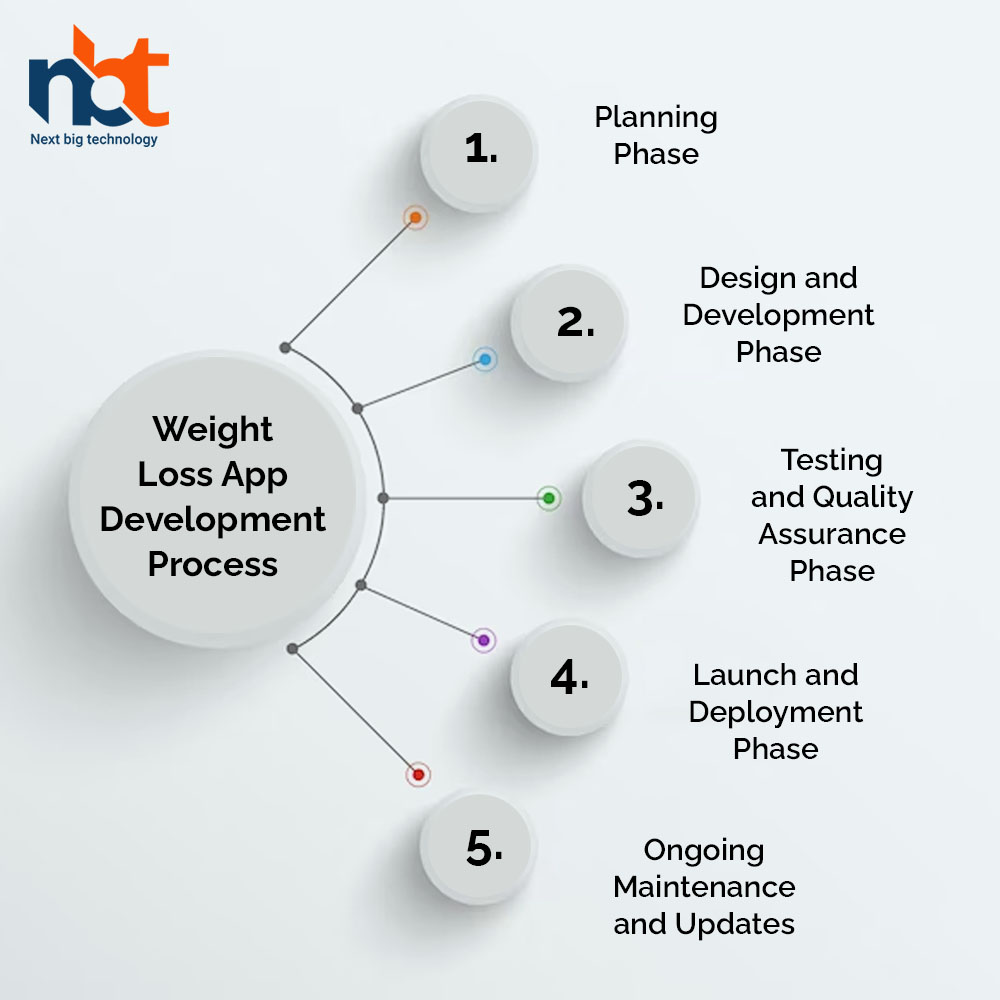In the digital age, weight loss apps have become valuable companions for individuals seeking to manage their weight, adopt healthier habits, and track their progress. These apps offer a range of features that facilitate goal setting, meal planning, exercise tracking, and motivation, making them powerful tools in the journey towards achieving a healthier lifestyle. This comprehensive guide delves into the key features, cost considerations, and step-by-step process involved in developing effective weight loss apps that empower users on their wellness journey.
Table of Contents
Introduction to Weight Loss Apps Development
Understanding Weight Loss Apps:
Defining the role of mobile applications in aiding weight management.
Digital Wellness Support:
Highlighting the benefits of weight loss apps in promoting healthier habits.
Key Features of Weight Loss Apps
Personalized Weight Goals:
- Individual Assessment: Gathering user data to set realistic weight loss goals.
- Progress Tracking: Displaying users’ weight loss journey through graphs and visuals.
Calorie Tracking and Nutrition Monitoring
- Food Diary: Allowing users to log daily food and beverage consumption.
- Calorie Count: Providing nutritional information and tracking calorie intake.
Meal Planning and Recipes
- Meal Suggestions: Offering meal ideas and plans tailored to users’ dietary preferences.
- Healthy Recipes: Providing a variety of nutritious recipes for users to explore.
Exercise Tracking and Workouts
- Activity Log: Enabling users to record their physical activities and workouts.
- Workout Plans: Offering exercise routines and plans suited to users’ fitness levels.
Progress Visualizations
- Before-and-After Photos: Allowing users to track visual progress by comparing photos.
- Measurement Tracking: Enabling users to log measurements of various body parts.
Motivational Features
- Challenges and Rewards: Providing fitness challenges and rewards for achieving milestones.
- Motivational Quotes: Offering daily motivational messages to encourage users.
Community Engagement
- Social Sharing: Allowing users to share progress, achievements, and challenges.
- Support Groups: Providing a platform for users to connect and motivate each other.
User Profiles and Privacy:
- Personalized Profiles: Allowing users to create profiles with weight loss goals and preferences.
- Data Security: Ensuring user data protection and compliance with regulations.
Factors Influencing Weight Loss App Development Cost
- Features and Complexity: The number and complexity of features integrated into the app.
- Design and User Experience: Creating an intuitive and visually appealing user interface.
- Integration with Wearable Devices: Developing compatibility with fitness trackers and smartwatches.
- Content Creation and Personalization: Generating meal plans, recipes, and motivational content.
- Community Engagement Features: Building platforms for social sharing and support groups.
- Data Security and Privacy: Ensuring compliance with data protection regulations.
- Ongoing Maintenance: Regular updates, bug fixes, and customer support.
Weight Loss App Development Process
Planning Phase
- Identify App Objectives: Define the primary purpose of the app (weight tracking, meal planning).
- Feature List: Compile a comprehensive list of features necessary for the app.
- User Experience (UX) Design: Outline the app’s user flow and initial design concept.
- Platform Selection: Decide on the target platforms (iOS, Android, or both).
Design and Development Phase
- Wireframing and Prototyping: Create wireframes to visualize the app’s layout and navigation.
- User Interface (UI) Design: Craft visually appealing screens aligned with the app’s wellness focus.
- Backend Development: Build the backend infrastructure to handle user data and app functionality.
- Wearable Device Integration: Develop compatibility with fitness tracking devices.
Testing and Quality Assurance Phase
- Functional Testing: Verify that all app features work as intended.
- Usability Testing: Involve users to test the app’s usability and gather feedback.
- Security Testing: Ensure data security and privacy safeguards are in place.
- Performance Testing: Test app responsiveness, tracking accuracy, and loading times.
Launch and Deployment Phase
- App Store Submission: Prepare and submit the app to relevant app stores (Apple App Store, Google Play Store).
- Promotion and Marketing: Develop a strategy to attract individuals looking for weight management solutions.
- User Onboarding: Provide user guides or tutorials to help users navigate the app.
- Analytics Setup: Implement analytics tools to track user engagement, progress, and user behavior.
Ongoing Maintenance and Updates
- Regular Updates: Continuously enhance the app by adding new features and content.
- Bug Fixes: Address technical issues promptly to ensure smooth app functionality.
- Security Updates: Regularly update security measures to protect user data.
- Customer Support: Provide assistance to users for inquiries and issues.
Choosing the Right Tools and Services
- App Development Platforms: Explore platforms like React Native, Flutter, or native app development.
- Wearable Device Compatibility: Utilize SDKs and APIs to connect with fitness trackers.
- Analytics Tools: Implement tools like Google Analytics or Mixpanel for user behavior tracking.
- Content Creation Tools: Utilize graphic design software for creating visuals and motivational content.
- Data Security: Ensure compliance with regulations for user data protection.
Conclusion
Weight loss apps play a pivotal role in helping individuals manage their weight, adopt healthier habits, and achieve their wellness goals. The features you incorporate, the design complexity, and the engagement strategies all contribute to the overall cost. By following a structured development process, leveraging appropriate tools, and prioritizing user experience, accuracy in tracking, and motivation, you can create a weight loss app that empowers users to embark on a transformative journey towards better health and a more active lifestyle.












